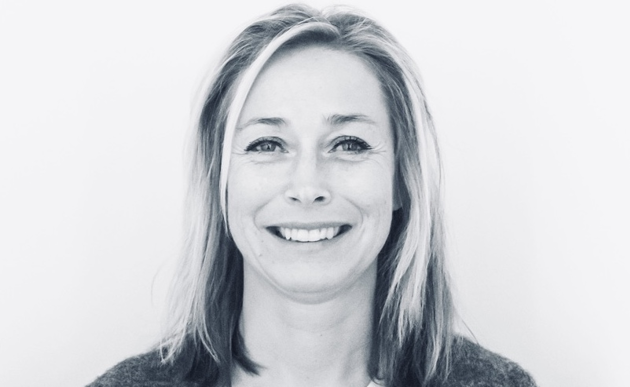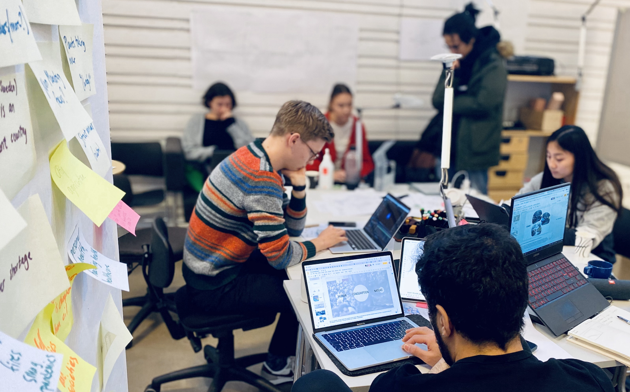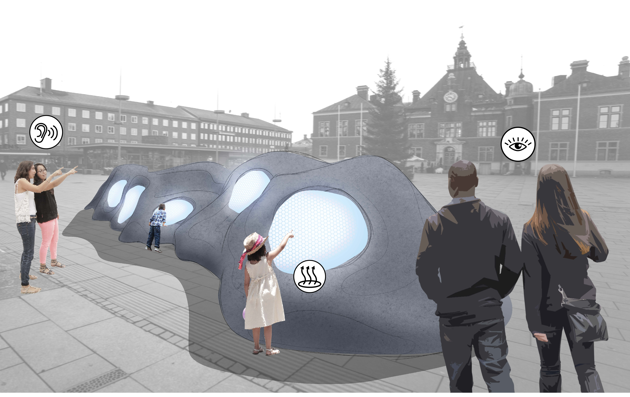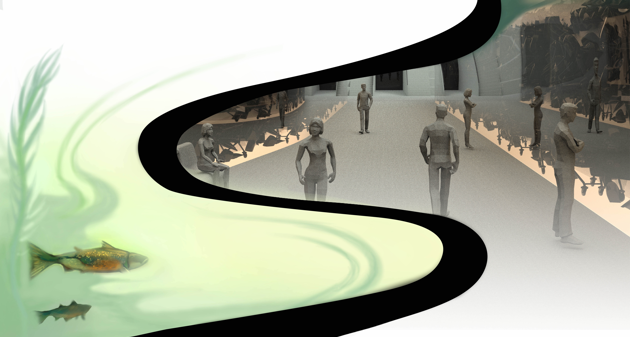Swipe to see all projects from the 2021 BFA ’Hot Team’ course, where students were challenged to design for humans and non-humans in the urban space.
Image:Jens PerssonBlurring the lines between human and nature
The might of the Uma river, whose life-giving force once gave birth (and name) to our city, inspired a group of students to embark on a design journey with mother nature as the ultimate beneficiary, rather than their fellow humans.

For the annual 'Hot Team' project, where BFA2's and BFA3's take over the project studio in a chaos of creativity, a question was posed to the joining students: What if both humans and nonhumans were acknowledged in the urban space?
Historically, design has mainly influenced the back end of a product's journey. Today, designers increasingly have to navigate multiple stakeholders and users as they create multi-layered experience journeys, often times with a digital or collaborative element. The increasing complexity of the job description means that designers are having a growing impact on how our societies are being shaped, and with that influence comes responsibility.

Monica Lindh Karlsson, senior lecturer in industrial design at UID, led the project.
ImageUmeå Institute of DesignDesign has the power to bring together diverse viewpoints into a dialogue that can support different voices in society
Monica Lindh Karlsson, senior lecturer at Umeå Institute of Design
"Through collaborative processes, designers have the opportunity to open up a political space for dealing with complex issues. One such example is the critical unpacking of concepts like 'human' and 'non-human'".
This year's Hot Team design mission allowed students to explore the urban space through these alternative perspectives, with the end goal of creating an experience where humans and-non humans can co-exist as equals. As shown by the resulting design concepts, the design brief sparked a wide range of visions from the six participating teams.
Initially, students gathered inspiration from seminars, on-site observations, interviews and research. The first conceptual embryos were then tried and tested in a maze-like landscape of asymmetrical cubicles in the UID project studio where each team housed their own improvised design office. Through numerous design sprints, where students built and tested a range of prototypes, the final concepts began to emerge.
Giving a face to human oversconsumption
Linn Thomessen (BFA3) believes that the framework for the Hot Team course - promoting diverse perspectives and the merging of design methods - led to a creative process characterized by compromise.
"This design process was not clear and predictable. Challenging perspectives had to be resolved within the team through understanding and dialogue. Personally, I have learned to reflect and better understand group working dynamics, allowing me to develop new methods for designing together. It was inspiring to have group members from different backgrounds".
Being able to see and design through the lens of different perspectives and value systems contributes to another level of design quality
Linn Thommesen, student BFA programme

Linn Thommesen (to the right) together with her team in the 'UID Project Studio'
ImageJens PerssonHer design team's concept was created in the wake of the recent global summit on climate change. Proposing an interactive installation in the center of the city, in connection to the city's main shopping street at Rådhustorget, they wanted to shine a light on the growing ecological footprint caused by unfettered consumption patterns.
"This is a global issue. We live in a linear system where objects are produced, used and discarded, generating massive amounts of waste. Sweden is one of the biggest consuming countries in the world on an individual level and even though people are aware of this problem far from all are adapting to a more circular lifestyle".

An interactive installation to display the societal act of over consumption.
ImageUmeå Institute of DesignThe installation, portrayed as a living being, hopes to invite reflection on the collective consumption habits of the citizens of Umeå. The "bubbles" expand in correlation to the overall monthly consumption of the city's residents, deflating again at the start of each month. To further interactivity and spontaneous discussions on sustainability the installation has been designed to function as a meeting space where people can gather and socialize.
She who roars - Citizens' reconnecting to their river
Another student design team turned their focus towards the verry birth of Umeå, aspiring to reconnect its citizens with the Uma river that runs through the city. Once a central part of the city's life blood, the river is today often neglected, serving no apparent purpose to many of its residents. A tunnel underneath the water surface, connecting two key districts in Umeå, is meant to rekindle the citizens' relationship with the river.
Uma, which is the river's real name, means 'roaring body of water'
Mika Sinclair, student bfa programme
"Historically, the river has also been a she, so one could argue that the name Uma means 'she who roars'. During this project we realized that throughout history Uma has been an important urban space and we saw this project as an opportunity to suggest how we might restore its status and meaning for the citizens of Umeå".

UMA transforms the commuter experience into a space for reflection and appreciation for Umeå's oldest citizen
ImageUmeå Institute of DesignThe team's proposal is based around a tunnel going under Uma, connecting central Umeå with the district of Teg. The opening of the tunnel transforms into a heated seating area on both sides of the river where people can explore marine life underneath the river surface. The seated area is in the shape of a curved staircase, named 'Laxtrappan' (Salmon Staircase).
"During the tunnel construction an extensive cleaning of the river will be conducted restoring its habitability for vegetation and animals. Trash and debris found during the cleaning will be sealed into a gallery along the sides of the tunnel showcasing the dangers of human-made environmental degradation", says Mika Sinclair.
"We hope that showing the dissonance between the restored river and the human-made thrash in the tunnel will transform the daily commute experience into a space for reflection and appreciation for Umeå's oldest citizen."












